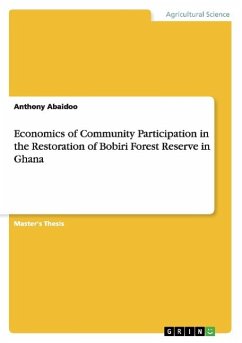Master's Thesis from the year 2018 in the subject Forestry / Forestry Economics, grade: A, Tribhuvan University (Institute of Forestry, Pokhara Campus, Pokhara-15, Nepal), language: English, abstract: Local Adaptation Plans of Action (LAPA) is community-based adaptation plan that take a 'vulnerability first' approaches to climate change. It was initiated more than half decade ago in Nepal and have crossed its planning and early implementation phase and it urges to study how it is progressing. For this purpose, Mauja village of Kaski District and Ghermu village of Lamjung were selected to assess the level of participation of poor and vulnerable (P&V) households (HHs), compare the contribution of P&V households; and examine the effectiveness of implemented plan to reduce the vulnerability and enhance their resilience. For the collection of required information, Household questionnaire survey, FGD, KII and direct field observations were implied for the primary data collection while the intensive literature review was done to collect secondary data. Similarly, Wilcoxon test was applied to check the effectiveness of LAPA implementation at 5% of significance level. The study reveals that, the participation of P&V HHs in LAPA formulation process was found to be quite appreciative. Specifically, respondents of Ghermu were found be more consultative and action and interaction oriented then the respondents of Mauja. However, the respondents of Mauja dominated Ghermu in activeness and involvement in specific activity. Similarly, for the LAPA implementation process, contribution of government agency (35%) is maximum in Mauja and contribution of donor agency(37%) maximum in Ghermu while comparing to contribution of CFUGs, partner NGOs and P&V HHs. In this regard, the contribution of P&V HHs was done in terms of physical contribution in both the villages. Spring and water source conservation activities, plantation of cash crops in bari land, beginning of the entrepreneurship were the major activities initiated by the inhabitants of both the villages after LAPA implementation. The implemented adaptation plan is found to be effective in terms of reducing vulnerability and enhancing resilience of P&V HHs in both Ghermu and Mauja. This study recommends for the enabling environment for P&V HHs to take ownership and need to facilitate a process of cross learning and sharing between district level and local level.








